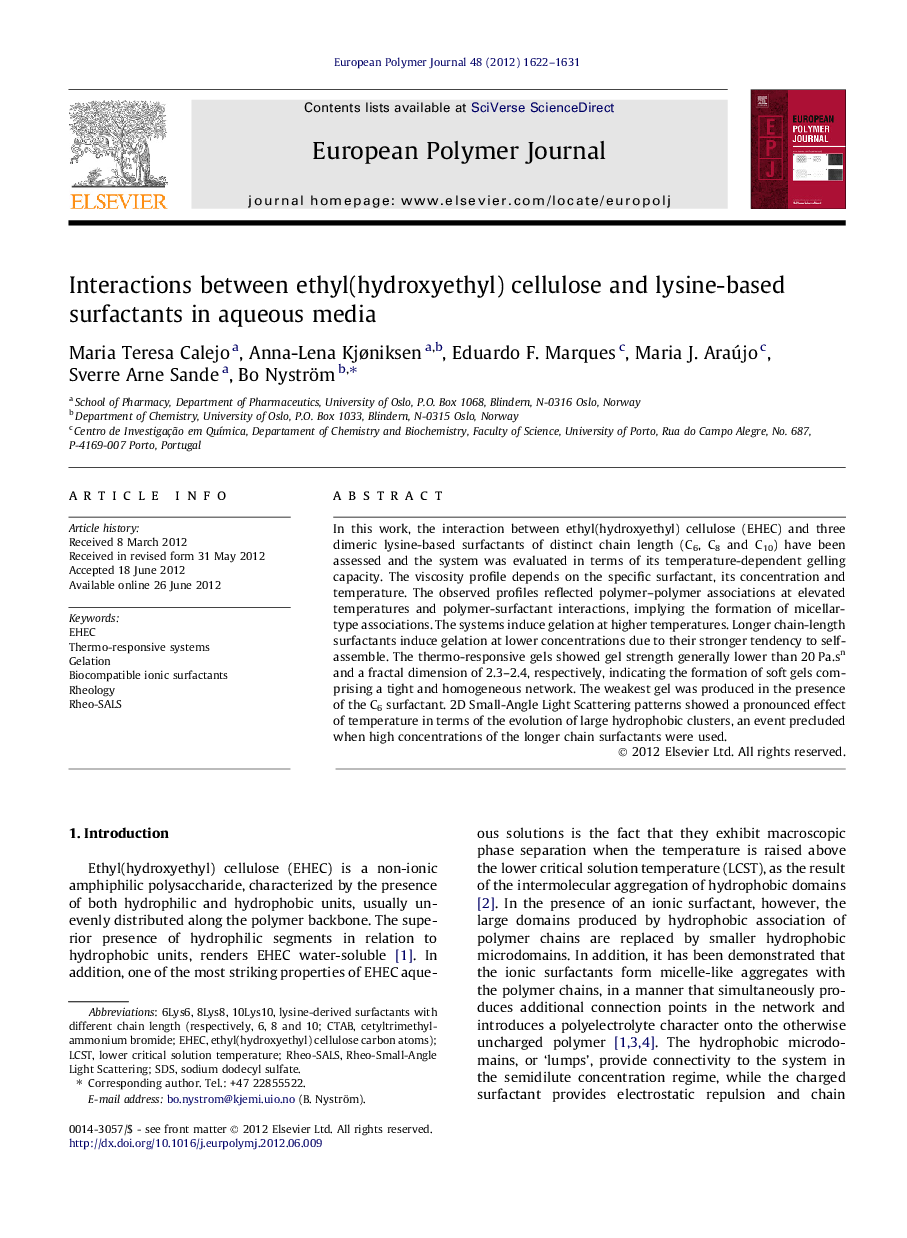| Article ID | Journal | Published Year | Pages | File Type |
|---|---|---|---|---|
| 1400485 | European Polymer Journal | 2012 | 10 Pages |
In this work, the interaction between ethyl(hydroxyethyl) cellulose (EHEC) and three dimeric lysine-based surfactants of distinct chain length (C6, C8 and C10) have been assessed and the system was evaluated in terms of its temperature-dependent gelling capacity. The viscosity profile depends on the specific surfactant, its concentration and temperature. The observed profiles reflected polymer–polymer associations at elevated temperatures and polymer-surfactant interactions, implying the formation of micellar-type associations. The systems induce gelation at higher temperatures. Longer chain-length surfactants induce gelation at lower concentrations due to their stronger tendency to self-assemble. The thermo-responsive gels showed gel strength generally lower than 20 Pa.sn and a fractal dimension of 2.3–2.4, respectively, indicating the formation of soft gels comprising a tight and homogeneous network. The weakest gel was produced in the presence of the C6 surfactant. 2D Small-Angle Light Scattering patterns showed a pronounced effect of temperature in terms of the evolution of large hydrophobic clusters, an event precluded when high concentrations of the longer chain surfactants were used.
Graphical abstractFigure optionsDownload full-size imageDownload as PowerPoint slideHighlights► New polymer–surfactant systems forming hydrogels at elevated temperatures. ► Amino acid–based low toxicity surfactants. ► Promising systems for pharmaceutical formulations requiring in situ gelation. ► Longer chain-length surfactants induce gelation at lower concentrations due to their stronger tendency to self-assemble.
